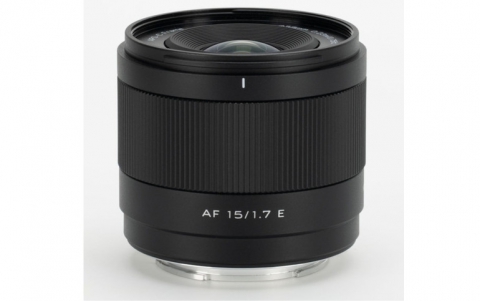IBM Unveils a Prototype Optical Network Technology for Sharing Huge Files in Seconds
IBM Researchers today unveiled a prototype technology that could bring massive amounts of bandwidth in an energy efficient way to all kinds of machines -- from supercomputers to cell phones.
The new technology uses light instead of wires to send information and could allow, for example, the transmission of 8 trillion bits (terabits) per second of information -- equivalent to about 5,000 high-definition video streams -- using the power of a single 100-watt lightbulb.
This kind of bandwidth can drive energy efficiencies inside of datacenters and speed the sharing of large datasets, whether it's scientists crunching data to discover new drugs and forecast the weather, people sharing high-definition movies between devices and friends, doctors sending high-definition medical images to a specialist in seconds for diagnoses while patient is in office, or bringing the power of high-definition to mobile phones.
Consistent with green computing initiatives, the new optical technology could save massive amounts of power in supercomputers. For a typical 100 meter long link, the power consumed by the optical technology is 100 times less than today's electrical interconnects, and offers a power savings of 10 times over current commercial optical modules.
This prototype "green optical link" is designed to meet the bandwidth requirements for peta- and exa-flop supercomputing, marking a significant leap from related work unveiled by the same research team a year ago. The new technology puts optical chips and optical data buses in a single package with standard components.
"Last year we unveiled an optical transceiver chip-set that could transmit a high-definition movie in under a second using highly customized optical components and processes," said IBM Researcher Clint Schow, part of the team that built the prototype. "Just a year later, we've now connected those high speed chips through printed circuit boards with dense integrated optical 'wiring.' Now we have built an even faster transceiver and have moved the optical components away from custom devices to more standard parts procured from a volume manufacturer, taking an important step toward commercializing the technology."
The applications for this technology range from cell phones to supercomputers and span industries from consumer electronics to healthcare, including:
- Web-serving sites that host videos could use the technology to access libraries with millions of high-definition movies and video clips in seconds, speeding up access for users. By incorporating an optical data port in laptops, HD video recorders, personal mp3 and video players, cell phones, or PDAs, HD video content could be stored and displayed on high- resolution external screens.
- Supercomputing: The improved bandwidth of data interconnects will enable massively parallel supercomputers to have a profound impact in many fields: offering improved molecular dynamics calculations, accelerating drug discoveries, providing accurate weather/climate modeling, as well advancing our understanding of sub- nuclear physics such as quantum chromodynamics.
The prototype that the IBM scientists revealed is the world's fastest and most integrated optical data bus that could lead to connecting an unprecedented number of high-performance computers to work as a single system.
Further details of this work was provided through two presentations at the 2008 Optical Fiber Communications Conference in San Diego, CA. Clint Schow will present "300-Gb/s, 24-Channel Full-Duplex, 850-nm, CMOS-Based Optical Transceivers," on Feb 25th and Fuad Doany presented "Chip-to-Chip Board-Level Optical Data Buses," on Feb. 28th.
Tech Specs
The optically-enabled circuit boards, or "Optocards," employ an array of low-loss polymer optical waveguides to conduct light between transmitters and receivers. The complete databus constructed with these Optocards not only incorporates a large number of high-speed channels, but also closely packs them to achieve unprecedented density: each waveguide channel is smaller in size than a human hair. The packaging approach for the complete system is unique in that it utilizes hybrid chip integration to produce a highly integrated optical module, or "Optochip."
The Optochip is a multi-component 3-D assembly, that is constructed with conventional surface mount solder processes similar to those currently used in the mass-production of electrical chips. The 10 Gb/channel databus is the first ever demonstration of an integrated module-to-module, 32-channel optical datalink on a printed circuit board. The need for high-bandwidth photonic communications between chips or modules has been discussed in technical literature for more than a decade, and various small pieces of the technology have been shown. IBM has assembled a fully functional and integrated solution, significantly advancing the field of chip-level optical interconnects. By proving the viability of high-density parallel optics, IBM has accelerated the prospect of real-world deployment of practical, high-capacity interconnects between chips.
In addition to the optical data bus, IBM also has developed a parallel optical transceiver module with a higher number of channels and an increased speed of operation: 24 transmitters and 24 receivers that each operate at 12.5 Gb/s. The resulting total bi-directional data transfer rate is an unprecedented 300 Gb/s, nearly doubling the performance of the earlier generation. Compared to current commercial optical modules the transceiver provides 10x greater bandwidth in 1/10 the volume while consuming comparable power. To enable low-cost volume production, the new transceiver uses standard 850-nm vertical-cavity surface emitting lasers (VCSELs), high-speed versions of the inexpensive devices found in many computer mice.
This kind of bandwidth can drive energy efficiencies inside of datacenters and speed the sharing of large datasets, whether it's scientists crunching data to discover new drugs and forecast the weather, people sharing high-definition movies between devices and friends, doctors sending high-definition medical images to a specialist in seconds for diagnoses while patient is in office, or bringing the power of high-definition to mobile phones.
Consistent with green computing initiatives, the new optical technology could save massive amounts of power in supercomputers. For a typical 100 meter long link, the power consumed by the optical technology is 100 times less than today's electrical interconnects, and offers a power savings of 10 times over current commercial optical modules.
This prototype "green optical link" is designed to meet the bandwidth requirements for peta- and exa-flop supercomputing, marking a significant leap from related work unveiled by the same research team a year ago. The new technology puts optical chips and optical data buses in a single package with standard components.
"Last year we unveiled an optical transceiver chip-set that could transmit a high-definition movie in under a second using highly customized optical components and processes," said IBM Researcher Clint Schow, part of the team that built the prototype. "Just a year later, we've now connected those high speed chips through printed circuit boards with dense integrated optical 'wiring.' Now we have built an even faster transceiver and have moved the optical components away from custom devices to more standard parts procured from a volume manufacturer, taking an important step toward commercializing the technology."
The applications for this technology range from cell phones to supercomputers and span industries from consumer electronics to healthcare, including:
- Web-serving sites that host videos could use the technology to access libraries with millions of high-definition movies and video clips in seconds, speeding up access for users. By incorporating an optical data port in laptops, HD video recorders, personal mp3 and video players, cell phones, or PDAs, HD video content could be stored and displayed on high- resolution external screens.
- Supercomputing: The improved bandwidth of data interconnects will enable massively parallel supercomputers to have a profound impact in many fields: offering improved molecular dynamics calculations, accelerating drug discoveries, providing accurate weather/climate modeling, as well advancing our understanding of sub- nuclear physics such as quantum chromodynamics.
The prototype that the IBM scientists revealed is the world's fastest and most integrated optical data bus that could lead to connecting an unprecedented number of high-performance computers to work as a single system.
Further details of this work was provided through two presentations at the 2008 Optical Fiber Communications Conference in San Diego, CA. Clint Schow will present "300-Gb/s, 24-Channel Full-Duplex, 850-nm, CMOS-Based Optical Transceivers," on Feb 25th and Fuad Doany presented "Chip-to-Chip Board-Level Optical Data Buses," on Feb. 28th.
Tech Specs
The optically-enabled circuit boards, or "Optocards," employ an array of low-loss polymer optical waveguides to conduct light between transmitters and receivers. The complete databus constructed with these Optocards not only incorporates a large number of high-speed channels, but also closely packs them to achieve unprecedented density: each waveguide channel is smaller in size than a human hair. The packaging approach for the complete system is unique in that it utilizes hybrid chip integration to produce a highly integrated optical module, or "Optochip."
The Optochip is a multi-component 3-D assembly, that is constructed with conventional surface mount solder processes similar to those currently used in the mass-production of electrical chips. The 10 Gb/channel databus is the first ever demonstration of an integrated module-to-module, 32-channel optical datalink on a printed circuit board. The need for high-bandwidth photonic communications between chips or modules has been discussed in technical literature for more than a decade, and various small pieces of the technology have been shown. IBM has assembled a fully functional and integrated solution, significantly advancing the field of chip-level optical interconnects. By proving the viability of high-density parallel optics, IBM has accelerated the prospect of real-world deployment of practical, high-capacity interconnects between chips.
In addition to the optical data bus, IBM also has developed a parallel optical transceiver module with a higher number of channels and an increased speed of operation: 24 transmitters and 24 receivers that each operate at 12.5 Gb/s. The resulting total bi-directional data transfer rate is an unprecedented 300 Gb/s, nearly doubling the performance of the earlier generation. Compared to current commercial optical modules the transceiver provides 10x greater bandwidth in 1/10 the volume while consuming comparable power. To enable low-cost volume production, the new transceiver uses standard 850-nm vertical-cavity surface emitting lasers (VCSELs), high-speed versions of the inexpensive devices found in many computer mice.





















